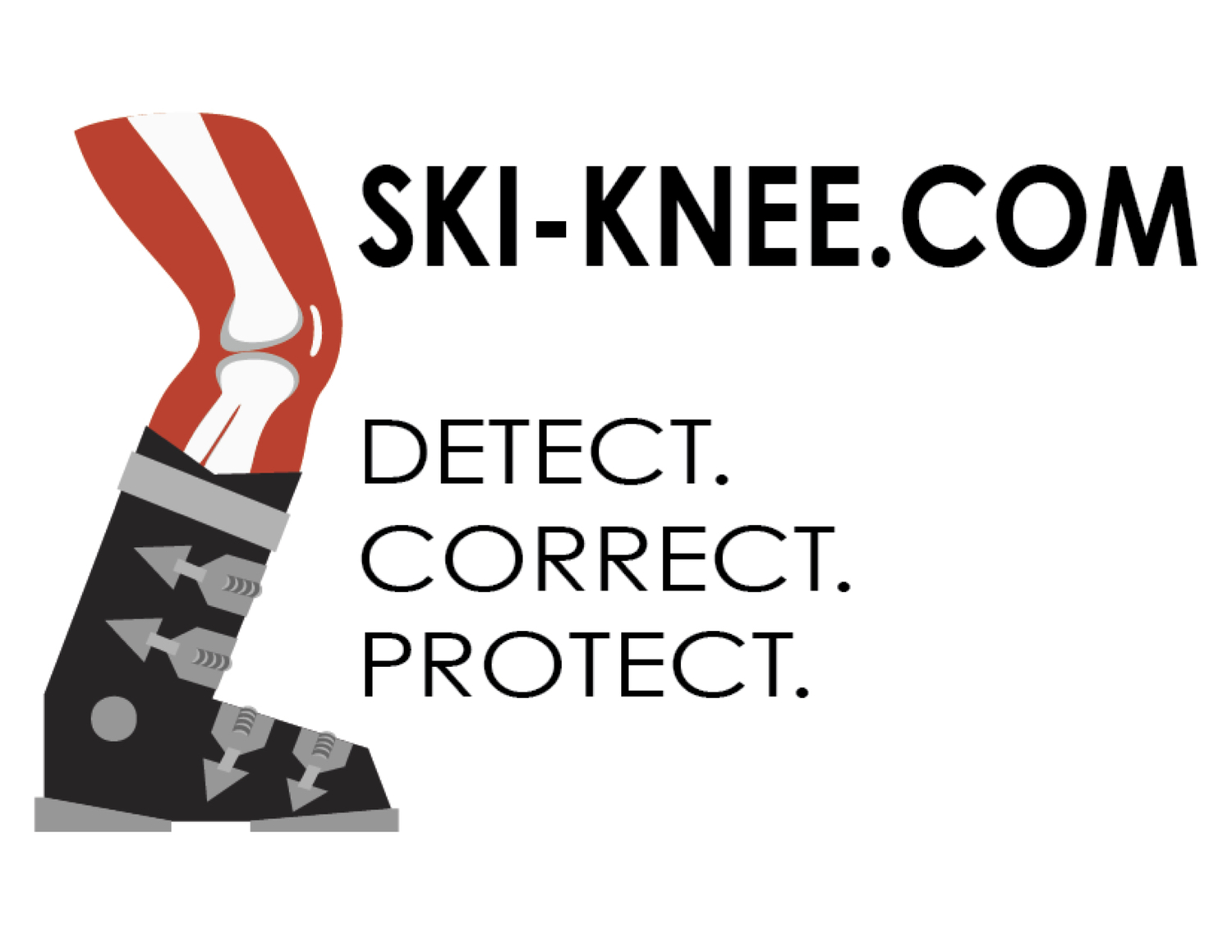A Multi-Factoral Outlook at Ski Knee Injuries.
What Factors Cause Knee Injuries?
Knee injuries are caused by a combination factors. In some cases an injury is unpreventable and is caused by poor weather, varying snow conditions or a sudden unexpected bump. However, in many situations on the mountain a knee injury can be prevented by the use of proper ski equipment, choosing appropriate ski runs, participating in a proper warm-up/ preventative exercises and skiing with correct mechanics.
Who is at Risk of Injury?
Why is it that some athletes get injured when others do not?
Some people are more susceptible to injuries than others. Ski-related knee tears are influenced by: previous injuries, age, energy/ fatigue levels, ski skill level, gender, hormones, anatomical build and muscular deficiencies.
Athletes identified as having weak hamstrings, excessively powerful quads, poor hip control and weak core muscles are at an increased risk of sustaining a knee injury because they cannot counter many of the forces imposed on the knee. [1] [2] Using incorrect muscles can cause the knee the collapse inwards into a valgus position, collapse outward into varus position or result in an excessive stiff or excessively bent knee when the joint is loaded (images shown below). This improper use of these muscles often creates unsafe jumping, landing and turning mechanics that can lead to ACL injury while skiing.[3] [4]
A Young Female Specific Injury?
Female athletes are 2-8 times more likely to tear their ACL than males.[5] Gender differences in the rates of ACL injury are thought to be because of hormonal, anatomical and neuromuscular reasons. Specifically, the hip and knee alignment, excessively mobile joints, and muscular development potentially contribute to the higher incidence rates of ACL injury among females.[6]
ACL injuries have become more frequent in younger athletes. For instance, researchers at the Children’s Hospital of Philadelphia noted there has been a 400% increase in ACL injuries for children and adolescents between 1999 and 2011. [7] This increase in injuries has been largely influenced by a greater emphasis on competition and training at a younger age.[8] [9] Sports related ACL injuries increase during adolescence and peak during mid- to late teens for female athletes. A 2012 study found thats female ski racers ages 17-year and 19-year olds had the highest likelihood of ACL injury [10].
Because of this, it is suggested that adolescent female skiers participate in ACL injury prevention exercises.
For many this information is overwhelming and difficult to understand until an injury has happened. The Ski Knee prevention test determines which risk factors an athlete might have and can be used to prescribe corrective exercises before the injury can happen.
Supporting Literature:
- Sell, T. C., & Lephart, S. M. (2012). Neuromuscular differences between men and women In Noyes & Barber-Westin (Ed.), The ACL: Anatomy, biomechanics, mechanism of injury, and the gender disparity. Springer: Heideburg. doi: 10.10071978-3-64232592-2.
- Chappell, J. D., Creighton, R.A., Giuliani, C., Yu, B., & Garrett, W. E. (2007). Kinematics and electromyography of landing prepay ration in vertical stop jump: risks for noncontact anterior cruciate ligament injury. American Journal of Sports Medicine, 35 (2), 235–241.
- Rozzi S. L., Lephart S. M., Gear W. S. & et al. (1999). Knee joint laxity and neuromuscular characteristics of male and female soccer and basketball players. American Journal of Sports Medicine, 27 (3), 312–319.
- Alves de Britto, M., Carpes, F.P., Koutras, G., & Pappas, E. (2014). Quadriceps and hamstrings prelanding myoelectric activity during landing from different heights amoung male and females athletes. Journal of Eletromyography and Kinesiology, 24, 508-514.
- Murray, M. M., & Fleming, B. C. (2012). The biology of the normal ACL In M. M. Murray, P. Vavken, & B. C. Fleming (Ed.) The ACL handbook: Knee biology, mechanics, and treatment. Springer- New York.
- Griffin, L. Y., Agel, J., Albohm, M. J., Arendt, E. A., Dick, R.W., Garrett, W. E., Garrick, J. G., Hewett, T. E., Huston, L.,…Wojtys, E.M. (2000). Noncontact anterior cruciate ligament injuries: Risk factors and prevention strategies. Journal of the American Academy of Orthopedic Surgeons, 8 (3), 141-150.
- American Academy of Pediatrics. (2011). Knee injuries on the rise in child and adolescent athletes. Retrieved from http://www.aap.org/en-us/about-the-aap/aappress room/pages/Knee-Injuries-on-the-Rise-in-Child-and-Adolescent-Athletes.aspx
- National Council of Youth Sports. (2008). NCYS report on trends and participation in organized youth sports. Retrieved from http://www.ncys.org/publications/ 2008sports participation-study.php.
- Griffin, L. Y., Albohm, M. J., Arendt, E. A., Bahr, R., Beynnon, B. D., Demaio, D… Yu, B. (2006). Understanding and preventing noncontact anterior cruciate ligament injuries: A review of the Hunt Valley II meeting, January 2005. American Journal of Sports Medicine, 34 (9), 1512- 1532.
- Raschner, C., Platzer, H-P., Patterson, C., Werner, I., Huber, R., & Hildebrandt, C. (2012). The relationship between ACL injuries and physical fitness in young competitive ski racers: a 10-year longitudinal study. British Journal of Sports Medicine, 46, 1065-1071. doi: 10.1136/bjsports-2012-091050


